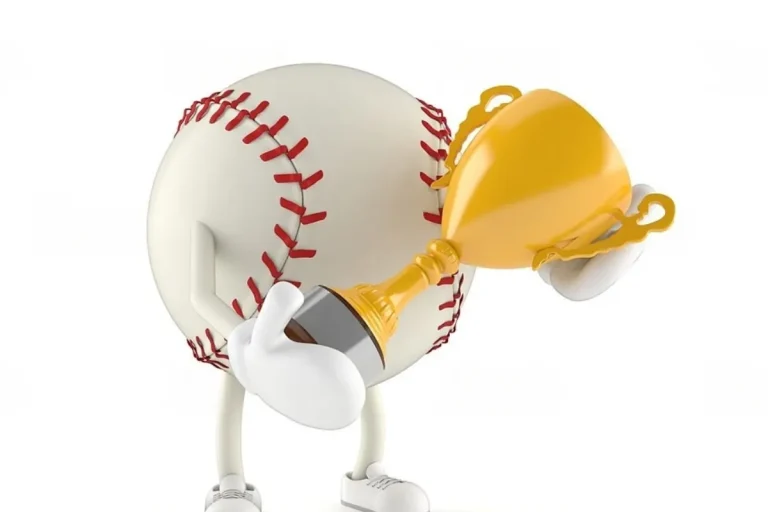How many outs are in a baseball game
Have you ever found yourself watching a baseball game and wondering, “How many outs are in a baseball game?” Well, you’re not alone! Understanding the concept of outs in baseball is crucial for both players and fans alike. In this blog post, we will dive into the world of baseball outs and explore their significance in the game. So, whether you’re new to the sport or a seasoned fan, let’s unravel the mystery behind the number of outs in a baseball game and discover why it matters.
What is an Out in Baseball?
In baseball, an out is a fundamental concept that marks the end of an offensive player’s turn at bat or the elimination of a baserunner. An out occurs when the defensive team successfully retires the batter or advances baserunners in specific ways. Let’s delve into the different ways a player can be called out in a baseball game.
- Strikesouts: One of the most common ways a player can be called out is through a strikeout. This happens when the pitcher throws three strikes against the batter, and the batter fails to make contact with the ball. It’s crucial to note that a foul ball on a third strike does not result in an out.
- Flyouts: A flyout occurs when a batter hits the ball into the air, and a defensive player catches it before it touches the ground. If a fly ball is caught, the batter is considered out, regardless of whether the ball was hit deep or shallow into the outfield.
- Groundouts: A groundout happens when a batter hits the ball along the ground, and a defensive player successfully fields the ball and throws it to first base before the batter reaches the base. This is a common type of out in baseball.
- Forceouts: A forceout occurs when a defensive player legally tags a base before the runner reaches it or throws the ball to the base ahead of the runner. This can happen when there is a runner on base and a batter hits a ground ball, forcing the defense to make a play to get an out.
How Many Outs Are in an Inning?
In baseball, an inning is a unit of play consisting of both teams having a turn to bat and a turn to field. Let’s explore the structure of an inning and understand how many outs are typically present.
An inning is divided into two halves: the top half and the bottom half. In the top half, the visiting team takes its turn to bat, while the home team fields. In the bottom half, the home team gets its chance to bat, while the visiting team takes on the defensive role. Each team has the opportunity to score runs during their respective half-innings.
Traditionally, an inning consists of three outs for each team. This means that a team has three opportunities to get batters out and prevent the opposing team from scoring runs. Once a team records three outs, their turn at bat or fielding is over, and it’s time for the other team to take their turn.
However, there are exceptions or special circumstances that can affect the number of outs in an inning. For instance, in the event of a tie game going into extra innings, each subsequent inning will continue until one team has more runs at the end of a complete inning. This means that extra innings can have more than three outs per team, extending the game until a winner is determined.
How Many Outs Are in a Regulation Game?
In baseball, a regulation game consists of a predetermined number of innings, and each inning consists of both teams having a turn to bat and field. Let’s explore the length of a regulation game and the standard number of outs involved.
A regulation game in baseball typically consists of nine innings. Each team has the opportunity to bat and field for nine innings, with the goal of scoring more runs than the opposing team. In a nine-inning game, the standard number of outs is 27, as there are three outs per team per inning.
However, there are situations where extra innings may be played. If the game is tied at the end of the ninth inning, additional innings are played until one team has more runs at the end of a complete inning. This means that extra innings can extend the length of the game and impact the number of outs.
During extra innings, the standard number of three outs per team per inning still applies. However, the game continues until a winner is determined, regardless of how many extra innings are needed. This means that the number of outs in a game can exceed 27 in the case of extra innings.
How Are Outs Counted and Displayed?
During a baseball game, outs are counted and displayed on the scoreboard to keep track of the progress of each team. Let’s explore how outs are counted and displayed, as well as the role of the official scorekeeper in tracking and recording outs.
Outs are counted by the umpires on the field. When a defensive player successfully retires a batter or baserunner, it is considered an out. The umpire signals the out by raising their right hand and making a fist. This visual cue indicates to both teams and spectators that an out has been recorded.
On the scoreboard, outs are typically displayed as a numerical value next to the inning number. For example, if there are two outs in the third inning, it will be displayed as “3rd Inning: 2 Outs.” This allows everyone to easily track the number of outs in each inning and gauge the progress of the game.
The official scorekeeper plays a crucial role in tracking and recording outs. They closely follow the game and record each out as it happens. The scorekeeper keeps a detailed record of the game, including the number of outs, hits, runs, and other important statistics. Their records serve as an official account of the game and are used for historical reference and statistical analysis.
The number of outs in a game has a significant impact on the strategies employed by both teams. For the offensive team, each out brings them closer to the end of their turn to bat. They may adjust their approach, such as taking more risks or being more conservative, depending on the number of outs and the score of the game. On the defensive side, accumulating outs efficiently is crucial to prevent the opposing team from scoring runs. The number of outs can influence defensive positioning, pitching decisions, and overall game strategy.
Can There Be More Than Three Outs in a Single Play?
In a standard baseball game, there can never be more than three outs in a single play. However, there are scenarios where unusual circumstances can lead to more than three outs being recorded. Let’s explore these scenarios and provide examples from historic baseball games where this has happened.
One such scenario is when a defensive player catches a fly ball for the third out of an inning, but the baserunners fail to tag up and return to their respective bases. If the defensive player successfully throws the ball to the appropriate base before the baserunner can tag up, an additional out can be recorded. This is known as a “double play,” where two outs are recorded on a single play.
Another scenario is when a batter hits a ground ball with two outs and the bases loaded. If the defensive player fields the ball and steps on a base for a force out, then throws to another base for another force out, two outs can be recorded on a single play. This is known as a “triple play.”
Historically, there have been instances where more than three outs were recorded in a single play. One notable example is the “unassisted triple play” performed by Bill Wambsganss of the Cleveland Indians in the 1920 World Series. With runners on first and second, Wambsganss caught a line drive, stepped on second base to force out the runner, and tagged the runner coming from first base. This rare feat resulted in three outs on a single play.
How Do Outs Impact the Outcome of a Game?
Outs play a crucial role in determining the outcome of a baseball game. Let’s explore the importance of outs and how they affect momentum, strategy, and scoring potential for both teams, as well as their role in defensive and offensive play.
Outs are the measure of defensive success in baseball. The more outs a defensive team records, the fewer opportunities the offensive team has to score runs. Each out brings the offensive team closer to the end of their turn to bat, reducing their scoring potential. As a result, outs have a direct impact on the final score of the game.
Outs also affect the momentum of a game. When a defensive team records an out, it can shift the momentum in their favor. This can motivate the defensive players, while simultaneously putting pressure on the offensive team. Conversely, if the offensive team manages to avoid outs and keep their turn at bat alive, it can build momentum and put pressure on the defense.
The number of outs influences the strategic decisions made by both teams. For the offensive team, outs dictate their approach at the plate. With fewer outs, they may take more risks and attempt to score runs aggressively. However, with more outs, they may adopt a more conservative approach, focusing on getting on base and extending their turn to bat.
Technical FAQs: How many outs are in a baseball game?
How many outs are there in a single inning of a baseball game?
Each team gets three outs per inning, totaling six outs in a complete inning.
Is there a limit to the number of outs a team can have in a game?
No, there is no specific limit to the number of outs a team can have in a baseball game.
Can a team have more than three outs in a single half-inning?
No, a team can have a maximum of three outs in a single half-inning before switching to the other team’s turn to bat.
How many total outs are there in a nine-inning baseball game?
In a standard nine-inning game, there are 54 outs (3 outs per inning multiplied by 9 innings).
What happens if a game goes into extra innings? Are there more outs?
Yes, in extra innings, each team continues to have three outs per inning until a team scores more runs than the other team in an inning.
Conclusion
Understanding the number of outs in a baseball game is fundamental to appreciating the sport’s intricacies. By grasping the concept of outs and their significance, you can gain a deeper insight into the strategies employed by teams and how they impact the game’s outcome. So, the next time you find yourself watching a baseball game, remember the importance of those outs and how they shape the course of play. Keep exploring the world of baseball, enhance your knowledge, and continue to enjoy the game with a newfound appreciation for the number of outs in a baseball game.



